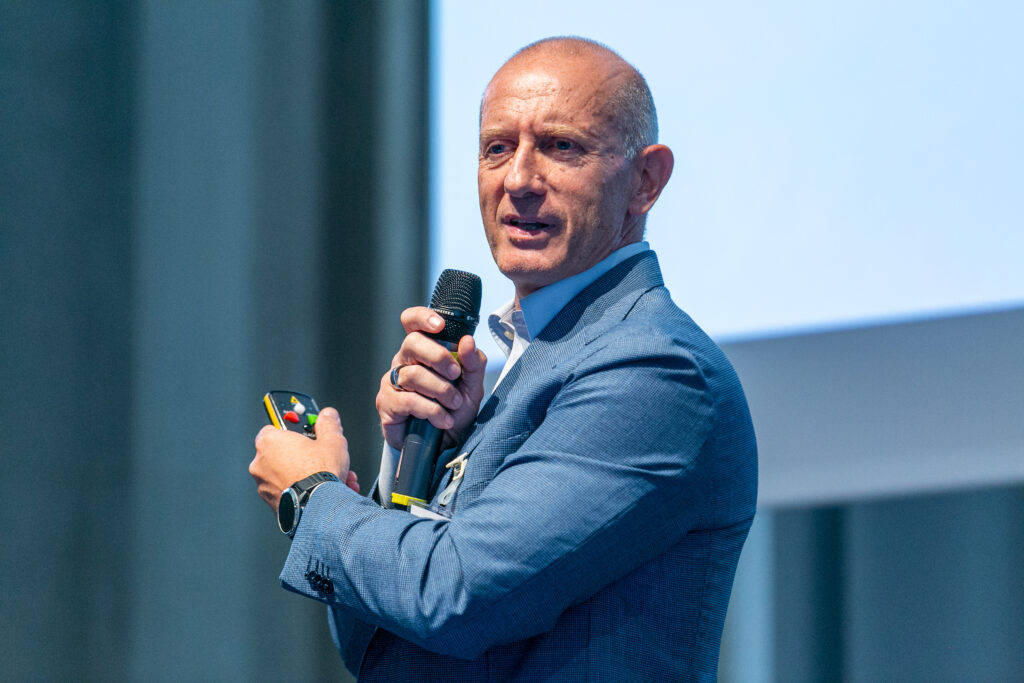Stefano Santori is not just a life coach, but a pioneering expert in the field of mindset change, and a beacon in the realm of personal development. With 15 years of experience under his belt, he has created a transformative method, Mindsetting, that empowers individuals, managers, athletes, and health enthusiasts alike, going beyond conventional coaching and delving deep into the core of one’s mindset. His roadmap for change unlocks limitless possibilities in life.
Santori’s journey encompasses an intricate understanding of how mindset change acts as the linchpin for substantial personal and professional growth, including coaching and biohacking. In this interview, we explore the transformative power of Mindsetting and its application in the realms of health, corporate dynamics, and athletic achievement.
- Could you tell us how your journey into mindset change and biohacking began, and what inspired you to develop the Mindsetting method?
Everything started when I noticed how meagre the number of people who actually changed their lives was following exposure to various techniques in different training courses. Why, given the same techniques and intelligence, did only some people really change? What prevented all the others from doing what they truly desired to achieve results? I understood that the problem was that the first group’s Mindset was more ready to implement the techniques while the second group first needed to modify their Mindset and only after forging the right and functional Mindset, could they put into action the new behaviors and strategies.
- Mindsetting involves realigning belief systems and reprogramming routines. Can you share a success story where this approach led to a significant transformation for an individual or an organization?
A few years ago I’ve met a the CEO of a multinational company called me asking me to deliver a new sales techniques training course for his sales team. Before designing the training intervention, I asked him why he wanted to deliver more sales techniques training, despite having a very skilled team with over 15 years of experience in the sales field and having delivered dozens of courses already. He replied that the team was stagnating: they could no longer achieve their usual performance levels and he was hoping that there existed techniques capable of breaking this stagnation. I understood that if I delivered yet another sales course it would be yet another failure. The problem was not the techniques or tools, but the Mindset, which had become dysfunctional. They were all experienced salespeople but they had a mindset entirely linked to traditional sales models, based on handshakes and in-person meetings. Their techniques had crystallized around this approach. But in the meantime, the advent of Digital meetings and the subsequent pandemic had created so-called Phigital Selling. I proposed a Mindset change path instead of a sales techniques course. It took some weeks but gradually as we progressed by questioning the old mindset, people began to see the market with new eyes, discovering never-used resources. By the end of the process they had not learned new techniques, but had built a completely different mentality!
- Your latest book, “Mindset Biohacking,” has gained widespread acclaim. Can you give us a glimpse into the key principles discussed in the book and their practical applications for readers?
The book fully respects the principles of the Mindsetting method: in the first part it helps readers change their mindset about health, helping them review dysfunctional beliefs, add fundamental knowledge and leverage individual values to draw the necessary motivation to start the change. In the second part it provides real practical protocols to implement the changes that each one will deem more functional. In the conclusion it provides strategies to create and make routines automatic, turning them into virtuous habits.
- What is the most crucial aspect of mindset change when it comes to embracing biohacking practices, and how have you made this discipline accessible to a broader audience?
A lot of people are convinced that Biohacking is just for special people (VIP, athletes, High Performer…). It is not true! The crucial point is not to establish who is the right target for a lifestyle like the one proposed in my book, but to understand from what point to start the change in mentality. It’s as if more people decided to arrive at the same destination by traveling. We cannot think of suggesting the same path and means for them because for someone close to the destination we could suggest a quick walk, for another, who would be located thousands of miles from the common endpoint, we would instead suggest a journey in stages, with different means of transportation and totally different times! My method is precisely based on this process of subjective adaptation to the level of mindset and relative awareness of people. Everyone can succeed in changing their mindset and embracing the style of biohacking, but probably no one will make exactly the same journey to get there.
- As a Trainer of Trainers at the Olympic Training School, how do you integrate mindset change into the training of athletes, and what role does it play in their performance on the field?
When I start my coaching sessions, I don’t immediately focus on building an action plan together with the athlete to achieve better performance, from which greater chances of winning derive. Rather, I investigate the mindset that the athlete has regarding the goal: what they believe and how much, what they know or don’t know, what habits they follow, where they focus more and less and above all why, and in some cases I even get to the point of investigating what they eat, when and with whom! The purpose is to map their current Mindset to understand and help them understand whether and how functional it is for the ambitious desired goal. Only then do we implement a real action plan to be implemented concretely. The issue is not whether they will win the Olympics or not, but understanding whether the athlete has the right Mindset to compete for the gold medal. The rest is just play!
- Mindsetting has been successfully applied in the corporate world. How does it contribute to fostering a positive and adaptive mindset within the fast-paced environment of multinational companies?
In an increasingly fast-changing world, in a discontinuously jumping market, old change management methods are no longer sufficient. There is no longer time to let things change through slow, gradual paths, starting perhaps from the bottom and creating prerequisites starting from cultural change. And this is where the Mindsetting method comes into play. Through a mindset mapping process, we are able to provide the top management of the company with a snapshot of the current state and the precise, specific plan of the areas to act on to make a fast mindset change, acting on multiple simultaneous fronts. To facilitate the process and scientifically and objectively trace its progress, I have also developed a dedicated App that supports the entire process and monitors it.
7. Can you elaborate on the significance of mindset change in building professional figures as coaches and trainers? How does it shape their approach to facilitating personal and professional change in others?
The Mindsetting method is a fundamental tool that adds to the bag of techniques that a coach or trainer must have because it allows facing every situation at different levels of awareness. When in fact people as well as organizations are unable to change despite apparently having the right resources, the problem must be solved at a higher level of awareness. This is when Mindset Change comes into play. Coaches and Trainers trained with this method have a real intervention protocol at their disposal that allows them to take a snapshot of the Mindset as it is, identify dysfunctional areas and create a complete and complex path able to forge the new Mindset.








